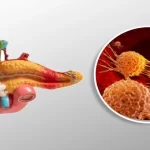
Lung cancer is a complex and challenging disease, and navigating the various treatment options can be overwhelming. In this blog, we’ll explore the different approaches available for lung cancer treatment, providing a comprehensive overview to help patients and their families make informed decisions.
Treatment Options for Lung Cancer:
Lung cancer can be treated using various methods, depending on the type and stage of the disease:
- Surgery: Surgery involves removing the tumor and nearby lymph nodes. Common surgical procedures include lobectomy, pneumonectomy, and wedge resection.
- Radiation Therapy: Radiation therapy uses high-energy X-rays to target and destroy cancer cells. Techniques include external beam radiation and stereotactic body radiation therapy (SBRT).
- Chemotherapy: Chemotherapy utilizes drugs to kill cancer cells or prevent their growth. Treatment may vary based on whether it’s used before surgery (neoadjuvant) or after (adjuvant).
- Targeted Therapy: Targeted therapies are drugs that specifically target genetic mutations or proteins in cancer cells, such as EGFR inhibitors and ALK inhibitors.
- Immunotherapy: Immunotherapy drugs help the immune system fight cancer. Checkpoint inhibitors and CAR-T cell therapy are some examples.
Making Informed Decisions:
When faced with a lung cancer diagnosis, patients should have open and informed discussions with their healthcare team to determine the most suitable treatment plan. Factors like cancer type, stage, overall health, and individual preferences play a role in decision-making.
Supportive Care:
Lung cancer treatment is not just about medical interventions. Supportive care, including smoking cessation, pulmonary rehabilitation, and palliative care, can improve the patient’s quality of life and overall well-being.
Navigating lung cancer treatment can be challenging, but with the right information and guidance, patients can make informed decisions that lead to the best possible outcomes.







